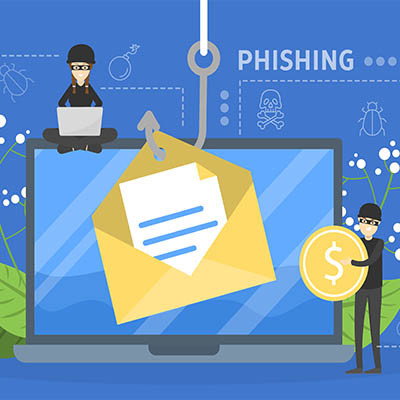SolutionOne Blog
Hackers Use the Pandemic to Send Out Phishing Threats
The first half of this year has seen its fair share of ups and downs, especially on a global scale. With a global pandemic still taking the world by storm, it’s despicable that hackers would take advantage of the opportunity to make a quick buck using phishing tactics. Yet, here we are. Let’s take a look at how hackers have turned the world’s great misfortune into a boon, as well as how you can keep a lookout for these threats.
According to reports from SecureList, spam and phishing trends in Q1 of 2021 relied heavily on COVID-19 and the buzz generated by it. Let’s take a look at some of the major threats that took advantage of the pandemic.
Stimulus Payment Scandals
The first couple months of 2021 saw businesses and individuals receiving payments from governments, such as economic impact payments or business bail-outs. Hackers took advantage of this opportunity to try to convince users to hand over their credentials through the use of messages that both looked and sounded professional. As is often the case with phishing messages, some users of specific banks were targeted through the use of near-identical websites designed to steal credentials and fool users. Others tried to convince users to enter information by convincing them that the latest details on the bank’s COVID-19 practices could be found on the other side of links or sensitive information forms.
The Vaccine Race
For a while, the COVID-19 vaccine was a bit tricky to get your hands on. While things have improved significantly in recent months, the initial rush to get vaccinated triggered many would-be hackers to try their hand at vaccination phishing emails that replicated the look and language of communication from health officials. Users would have to click on a link in the message, which would then redirect them to a form for plugging in personal information and, in some cases, banking credentials. Even those who already received vaccinations were not safe, as there were fake surveys circulating urging people to fill them out and claim prizes for doing so.
What You Can Do
Don’t let hackers take advantage of the cracks in your business’ defenses. Phishing attacks can come in countless forms, so it is your responsibility to protect your business from them. Here are some ways that you can make sure your organization is secured from phishing attempts.
- Filter Out Spam: A spam filter can keep the majority of threats out of your inbox, but the unfortunate fact is that most phishing emails are probably going to make it past the spam filter. Therefore, you will want to take more advanced tactics against these threats.
- Train your Employees: Training your employees on how to identify threats gives them the power to avoid threats that do manage to get past your defenses. Teach them what to look for and you’ll be giving yourself a better chance of overcoming them.
- Implement Unified Threat Management: No matter how well trained your employees are, it helps to have just a little bit of reassurance that you have done all you can to secure your business. This is what a UTM does; it’s a single security solution that can optimize your network’s protection.
SolutionOne can help your business keep itself secure. Not only can we implement great security solutions, but we can also help to train your employees, including regular “tests” where we send out fake phishing emails to see who is and is not paying attention. To learn more about how this can help your organization, reach out to us at (214) 299-8555.

Comments